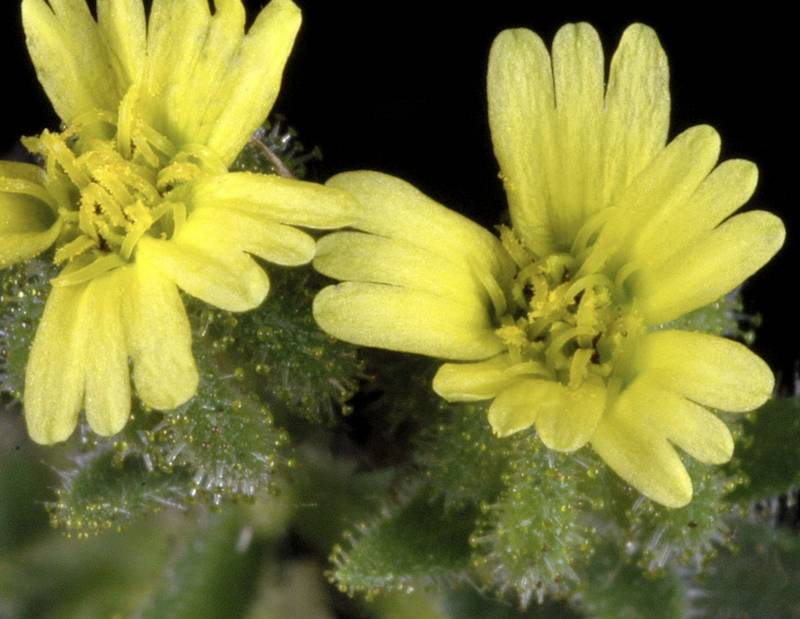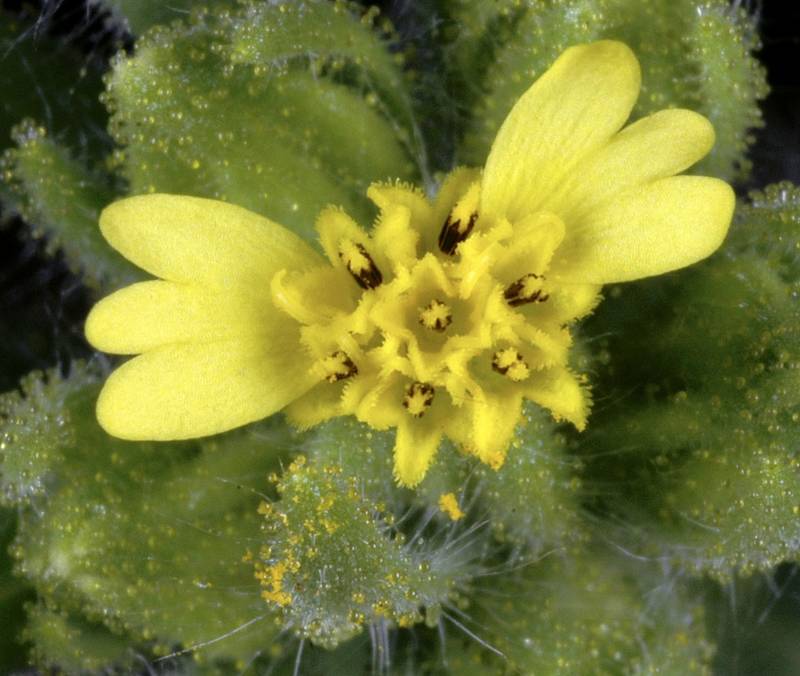Madia gracilis
Madia glomerata
grassy tarplant, common tarweed, slender tarweed
mountain tarplant, cluster tarweed, mountain tarweed
Leaves linear to linear-oblong, 2-11 cm. long and 1-10 mm. wide.
Leaves linear or lance-linear, 2-7 cm. long and 1-5 mm. wide.
Heads in a raceme, or multiple racemes in plants with branched stems;
involucre ovoid, 6-11 mm. high and 5-10 mm. wide, its bracts in a single series and of equal length;
rays 5-13, typically 8, 4-7 mm. long, pistillate and fertile, yellow, their achenes enclosed by the involucral bracts;
disk flowers fertile, yellow, separated from the ray flowers by a row of bracts;
pappus none.
Heads tightly packed together in a few to many small clusters;
involucre spindle-shaped, 6-9 mm. high and 2-4 mm. wide;
rays inconspicuous, 2 mm. long, usually 1-3 or wanting;
disk flowers several, fertile, yellow, their subtending bracts like those of the ray flowers, which are in a single series and of equal length;
pappus none.
Achenes flattened.
Madia gracilis
Madia glomerata
- Local floras:
BC,
CA,
OR,
WA
- Local Web sites:
CalFlora,
CalPhotos,
Flora NW,
PNW Herbaria,
Turner Photog.
WildflowerSearch
iNaturalist (observations)
USDA Plants Database
- LBJ Wildflower Center
- SEINet
- Plants of the World Online
- Encyclopedia of Life
- Wikipedia
- Google Image Search
- Local floras:
BC,
CA,
OR,
WA
- Local Web sites:
CalFlora,
CalPhotos,
Flora NW,
PNW Herbaria,
Turner Photog.
WildflowerSearch
iNaturalist (observations)
USDA Plants Database
- LBJ Wildflower Center
- SEINet
- Plants of the World Online
- Encyclopedia of Life
- Wikipedia
- Google Image Search



